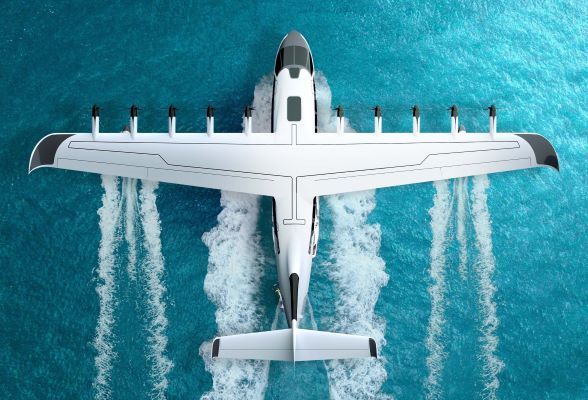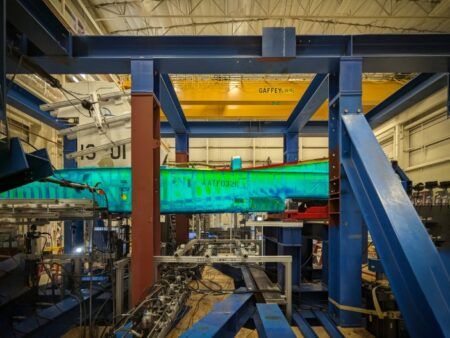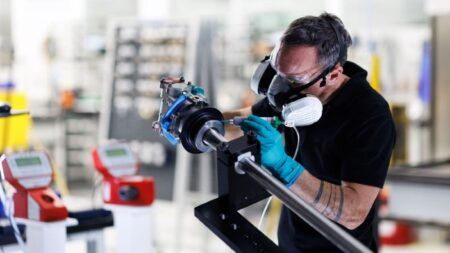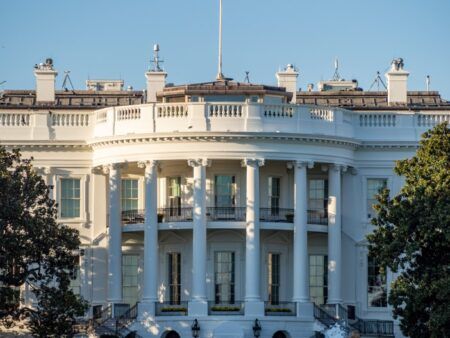Jekta has begun flight trials with a 1:9-scale prototype of its PHA-ZE 100 amphibious aircraft to verify the aerodynamic and hydrodynamic configurations of the production aircraft.
The remotely controlled model will generate data representative of the full-size aircraft to verify and confirm the results of computational modeling that has already been completed. Testing is expected to produce data on aircraft performance during landing, taxiing, and take off from water.
The Switzerland-based manufacturer is using a distributed electric power plant that draws energy from onboard batteries for the testing program.
“After extensive virtual trials and simulations, our engineers are excited to begin flying the 1:9 prototype,” said George Alafinov, CEO and co-founder of Jekta. “The flight testing marks an important milestone on our journey to bring next-generation electric amphibious aircraft to operators globally.”
Following initial verification work with the 1:9 aerodynamic prototype, two amphibious flying boats are being modified as proof-of-concept aircraft. These purpose-built ultralight test beds will validate the combined digital and real-world data and further de-risk the program ahead of full-scale prototype construction.
Flight testing of the scaled prototype is taking place at an undisclosed location and is scheduled for completion in September. The testing program aims to inform detailed design modifications for the full-scale aircraft development.
Jekta’s team has experience of amphibious aircraft design through the production of more than 90 single-engine ultralight and twin-engine flying boats. According to Alafinov, the company is drawing on years of amphibious aircraft experience by basing full-size test beds on ultralight aircraft of its own design.
The electrically powered, all-composite PHA-ZE 100 amphibious flying boat incorporates hydrogen fuel cell technologies and will be certified to Part 23 standards for fixed-wing passenger aircraft. The aircraft is designed to operate from coastal waters in waves up to 1.2m high, lakes, waterways, and runways using standard retractable wheeled landing gear.
The PHA-ZE 100 targets multiple applications including luxury tourism, experiential flight, regional transportation, and civil use. The versatile aircraft aims to deliver lower operating costs, comfort, zero emissions, and flexible configurations for various operational requirements.
According to Jekta, the PHA-ZE 100 already has more than US$1 billion in forward commitments from customers and the company plans to begin production at its Payerne facility in 2028/29. The company expects for the Part 23 aircraft to enter service in 2030.





